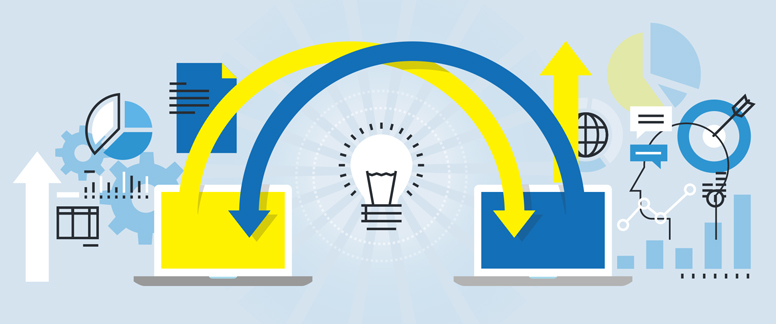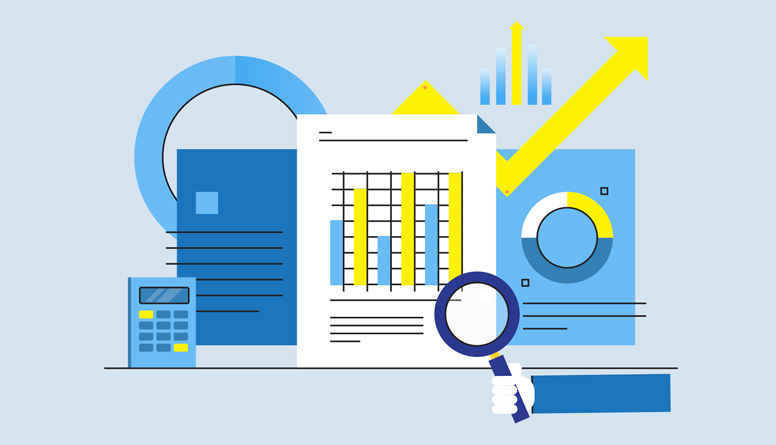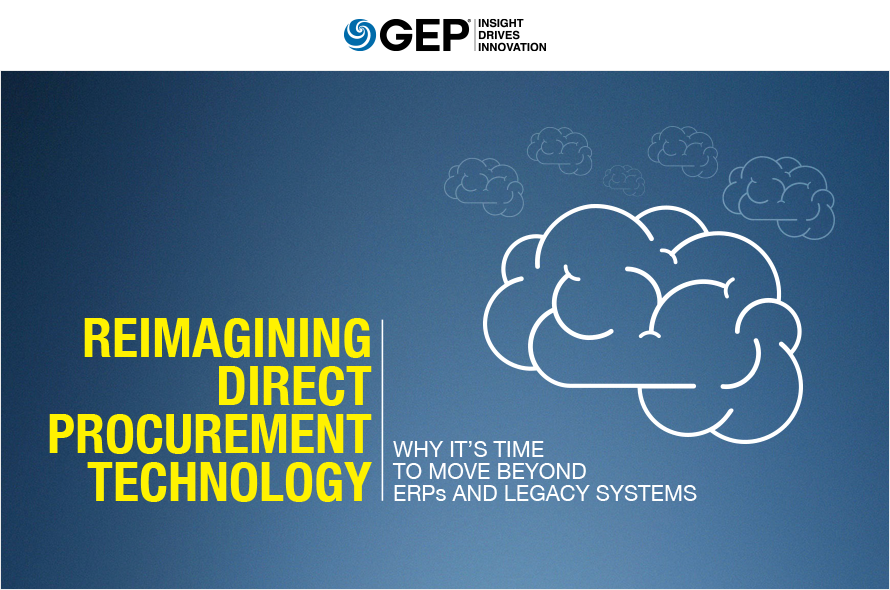Let’s face it — direct procurement technology hasn’t really kept pace with the times. Many enterprises continue to use a mix of legacy ERP systems and multiple standalone tools to manage their direct spend, stifling the capabilities and performance of their procurement teams.
It doesn’t have to be this way.
A new white paper — Reimagining Direct Procurement Technology: Why It’s Time to Move Beyond ERPs and Legacy Systems — examines the evolution of the role and needs of direct procurement teams over the years and how technology hasn’t been able to support these changes. It also discusses the pitfalls of using legacy ERP systems and bolt-on tools to manage direct spend.
Why Read It:
- Understand the need for new, more effective direct procurement technology
- Discover the strategic advantages of using a next-gen AI-powered, data-driven procurement platform
- Learn how next-gen direct procurement technology can enable agile and effective decision-making
Read today to learn how new tech can help you transform direct spend management and deliver greater strategic value to the enterprise.
For far too long, direct materials procurement has been seen as a function that has to be conducted entirely in an ERP system. This has served to isolate it from other key enterprise functions, obstructing operational transparency and preventing holistic efficiency improvements. However, as artificial intelligence (AI) and data science programs mature, we can expect change to happen at a faster pace and new capabilities from cloud development platforms. In fact, the innovations in enterprise technology make it safer than ever to predict that ERP’s stronghold over direct procurement is coming to an end.
With this assertion behind us, it’s possible to foresee the advantages of using a completely new type of solution for direct materials procurement. But the requirements are daunting: in order to transition from the past to the future, platforms will need to deliver sophisticated demand forecasting, production scheduling and inventory, not to mention satisfy traditional procurement objectives such as spend analysis, supplier management, sourcing and optimization.
Moving from an ERP to a fully integrated direct materials platform is a significant step change in operational procurement technology, on par with the challenge electric cars represent to the internal combustion engine.
It might seem fanciful to suggest that a global enterprise simply ditch its ERP system, but that same resistive thinking has prevented incremental improvements for decades. The next-generation solutions are designed to do a better job in today’s complex supply chain environment, and they are not hampered by historically unavoidable infrastructure constraints.

SUPPORTING A SHIFT FROM SEQUENTIAL TO CONCURRENT MATERIALS MANAGEMENT
Traditionally, direct materials planning was handled sequentially. After starting with a baseline demand forecast, various individuals would weigh in and make adjustments over time. These adjustments would then be extrapolated based on current inventory levels, and the size and timing of new orders would be determined. Today, however, multi-perspective materials management is happening all the time — in some cases without human intervention. Companies are always connected to the market, and warehouses are increasingly automated. Concurrent changes are made in real time in response to a more detailed level of understanding and heightened sensitivity to upstream and downstream market dynamics.

Materials management has become an outside-in activity, one that is driven by multiple data streams rather than being rooted in past supply and demand trends. Increasing levels of disruption and shifting buyer behavior have rendered historical data inadequate as an indicator of future activity. Building and defending a competitive advantage requires constant supply chain optimization — an inherent capability of next-generation technologies. Automation and the application of data lakes to today’s business challenges have made the idea of a self-driving and self-correcting supply chain a very real possibility.
MODELING AND SIMULATING AMPLIFY PLANNING AND FORECASTING
When direct materials procurement was primarily managed through planning and forecasting, forward-looking numbers were a modified extension of past figures. Modifications were based on loosely informed best guesses, and little time was invested in studying forecast accuracy or input influence.
In the likely future model, 70% of the data affecting enterprise decisions will come from external sources. This means that an ERP system would account for only about 30% of the required visibility. External resources include microeconomic and macroeconomic data, point-of-sale data, weather data, responsive demand drivers, upcoming promotions, new product introduction schedules and unstructured data such as social media engagement. Predictive analytics and machine learning now make it possible to combine and structure these data elements so that varying decision paths can be tested against them.

This is not demand planning, it’s modeling. Preparing the organization — and potentially the entire supply chain — for scenarios that have been tested and optimized vastly improves and accelerates decision-making capabilities at the enterprise level. New technologies make it possible to model multiple scenarios in advance so that when the point of decision arrives, the output of the scenarios and simulations determines the optimal procurement strategy.
Whether procurement is focused on the core business, direct materials, third-party services or indirect spend, the overarching goal is the same: acquire the right things at the right price at the right time. The nuances and details remain important for sustained success and stability, and the way these nuances and details are handled within the procurement software likely explains why most of these “solutions” have come up short when used for direct procurement. But AI, data science, augmentation and a new level of user experience are changing all that rapidly.
AI-driven data science will serve as the core, feeding from the data lake that powers the ability to create digital twins and autonomous procurement systems. Bringing these technologies together will deliver the transformational experience and capabilities needed to strategically manage direct materials.
Foundational technologies will strengthen and possibly revolutionize how the data-science core drives the procurement ecosystem, leading directly (and quickly) to the next generation of procurement and supply chain software.
MAKING WAY FOR NON-ERP SOLUTIONS
In today’s complex supply chain environment, the next generation of procurement technology will be disruptive, but in a positive sense — and this will be welcome news for direct procurement, which has been hampered by ERP’s constraints and its systematic disconnection from the real market.
Automation, AI and data science are creating an “outside-in” operational model that holds the key to real competitive business advantage in a time of accelerating change. An integrated, data-driven, AI-enabled system can improve the enterprise’s decision-making capabilities and enable a level of efficiency and productivity in direct materials procurement that cannot be achieved by legacy systems or multiple point solutions.
With the ability to incorporate data, structured and unstructured, from external sources, and with the ability to react immediately to changing conditions that impact production, inventory and customer satisfaction, companies can improve confidence in their ability to thrive in a decidedly volatile climate.

